Creationism in Crisis
25 Million Years of Australian Evolutionary History Revealed.
25 Million Years of Australian Evolutionary History Revealed.
Creationism in Crisis
25 Million Years of Australian Evolutionary History Revealed.
25 Million Years of Australian Evolutionary History Revealed.
Creationism in Crisis
25 Million Years of Australian Evolutionary History Revealed.
25 Million Years of Australian Evolutionary History Revealed.
Creationism in Crisis
25 Million Years of Australian Evolutionary History Revealed.
25 Million Years of Australian Evolutionary History Revealed.
Creationism in Crisis
25 Million Years of Australian Evolutionary History Revealed.
25 Million Years of Australian Evolutionary History Revealed.
Creationism in Crisis
25 Million Years of Australian Evolutionary History Revealed.
25 Million Years of Australian Evolutionary History Revealed.
Creationism in Crisis
25 Million Years of Australian Evolutionary History Revealed.
25 Million Years of Australian Evolutionary History Revealed.
25-million-year-old fossils of a bizarre possum and strange wombat relative reveal Australia's hidden past
More bad news for Creationists comes in the form of fossil evidence showing that there were diversified marsupial mammals living in Australia 25 million years ago, and some of these were bizarre by today's standards.
Koalas had already diversified into several different species; the ancestral kangaroo was the size of a possum and a wombat-sized animal was soon to produce the largest ever marsupial, Diprotodon optatum which weighed about 2.5 tonnes. Central Australia was at the time a vast, lush forest, dominated by giant flightless birds and crocodiles.
All a far cry from the Creationist cult superstition about special creation just a few thousand years ago, not to mention the supposed global flood genocide even more recently, following which the marsupials all managed to get back to Australia but no other mammals, apart from bats, dingoes and humans, managed to make it there, and there they underwent warp-speed evolution to reach today's level of diversity, with several new species every generation, then stopped evolving completely just as humans began keeping records.
The evidence for those claims comes from the fossil record excavated from near Pwerte Marnte Marnte, south of Alice Springs, which is the subject of an article in The Conversation by three palaeontologists, Arthur Immanuel Crichton, PhD candidate, Aaron Camens, Lecturer in Palaeontology and Gavin Prideaux, Associate professor all of Flinders University, Australia.
Their article is reprinted here under a Creative Commons licence, reformatted for stylistic consistency. The original can be read here.

25-million-year-old fossils of a bizarre possum and strange wombat relative reveal Australia’s hidden past
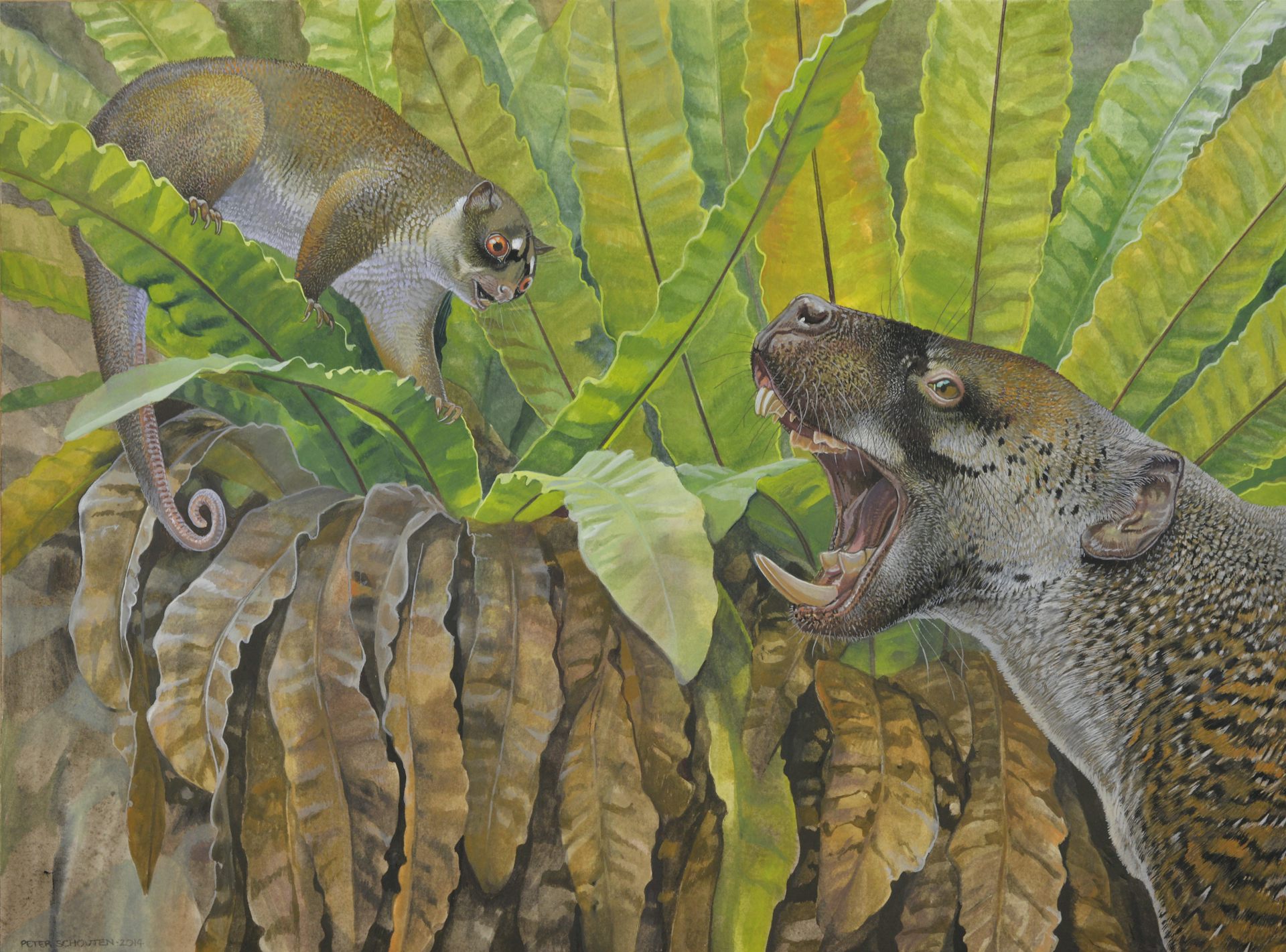
Relative of Chunia pledgei named Ektopodon serratus (top left), with Wakaleo oldfieldi.
Arthur Immanuel Crichton, Flinders University; Aaron Camens, and Gavin Prideaux, Flinders University
Imagine a vast, lush forest dominated by giant flightless birds and crocodiles. This was Australia’s Red Centre 25 million years ago. There lived several species of koala; early kangaroos the size of possums; and the wombat-sized ancestors of the largest-ever marsupial, Diprotodon optatum (around 2.5 tonnes).
A window onto this ancient time is provided by a little-studied fossil site near Pwerte Marnte Marnte, south of Alice Springs in central Australia. This late Oligocene site yielded the earliest-known fossils of marsupials that look similar to modern ones, as well as fossils from wholly extinct groups such as the enigmatic ilariids, which were something like a koala crossed with a wombat.
While excavating this site from 2014 to 2022, Flinders University palaeontologists have found fossils from many more wonderful animals. In a pair of recently published studies, we name two of these species: a strange wombat relative and an even odder possum.
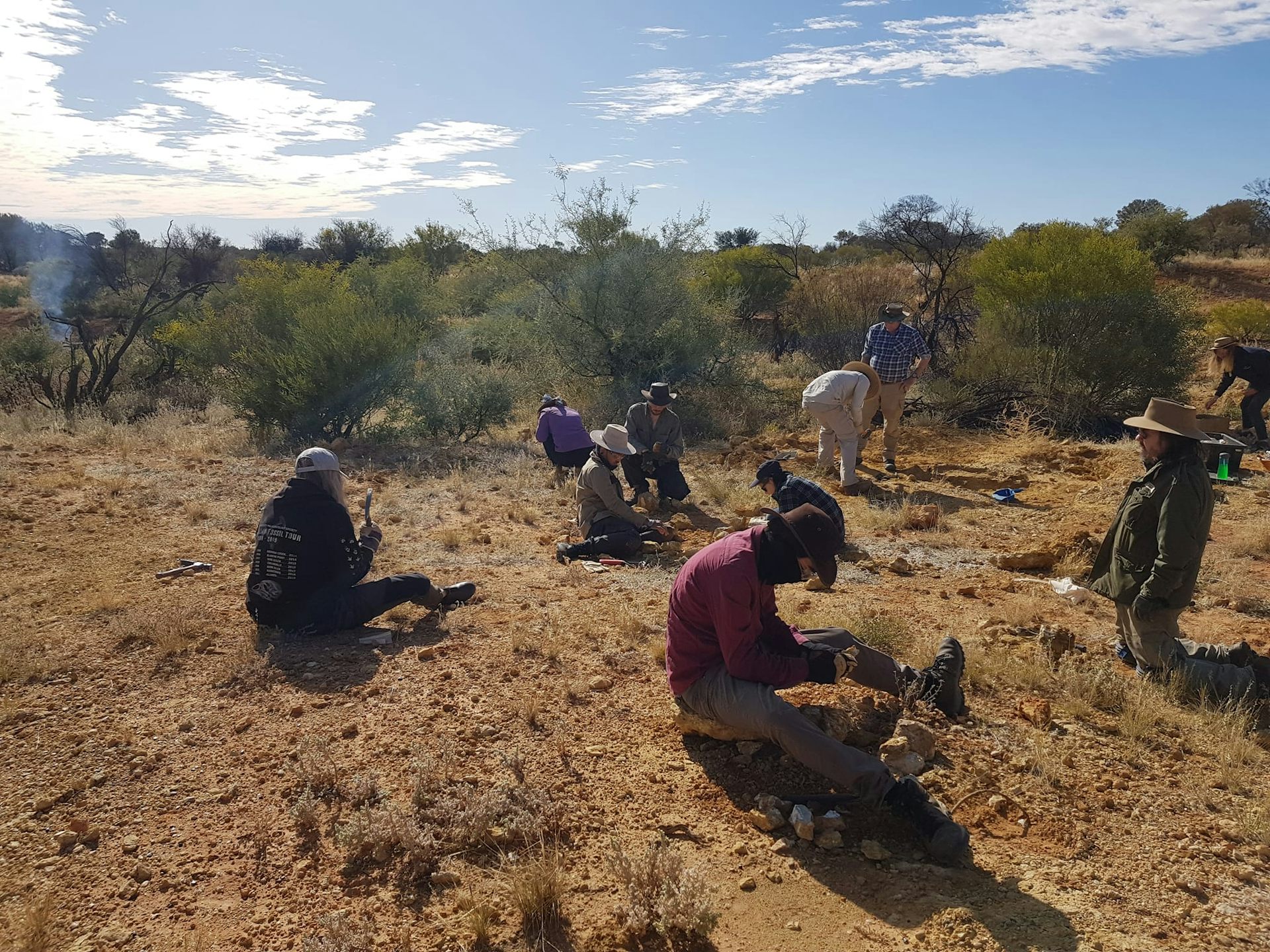
Flinders University palaeontologists at Pwerte Marnte Marnte fossil site.
Arthur Crichton, Author provided
A toothy wombat
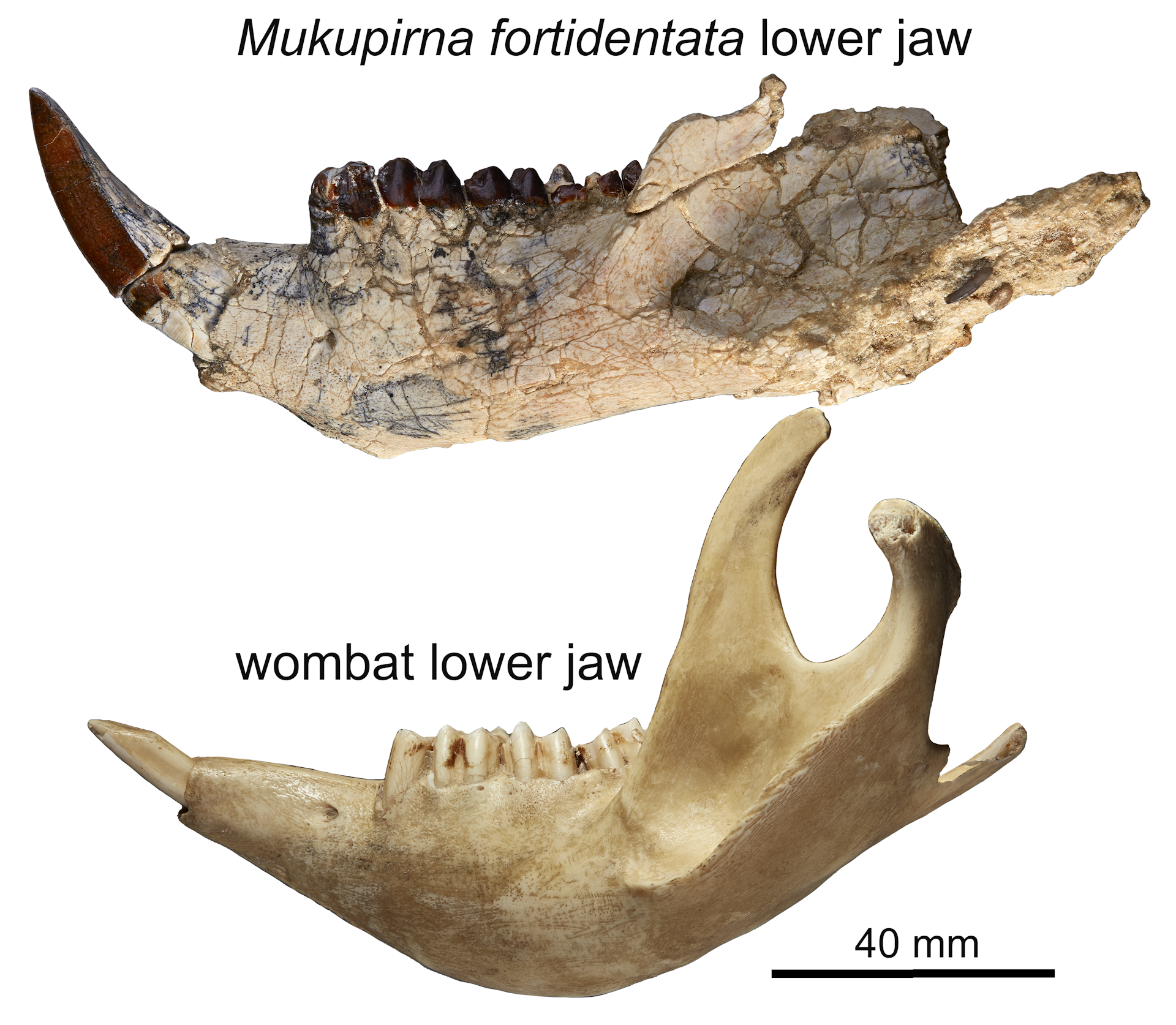
Left lower jaw of Mukupirna fortidentata compared with that of the southern hairy-nosed wombat.
Arthur Crichton, Author provided
Weighing in at around 50kg, it was among the largest marsupials of its time. We named it Mukupirna fortidentata.
Everything about its skull and jaws shows this animal had a pretty powerful bite. Its front teeth, for example, were large and spike-shaped, being more like those of squirrels than wombats. These would have enabled them to fracture hard foods, like tough fruits, seeds, nuts and tubers. Its molars, by comparison, were actually quite similar to those of some monkeys, such as macaques.
Mukupirna fortidentata is only the second known member of a new family of marsupials described in 2020 called Mukupirnidae. These animals are thought to have diverged from a common ancestor with wombats over 25 million years ago. Sadly, they went extinct shortly thereafter.
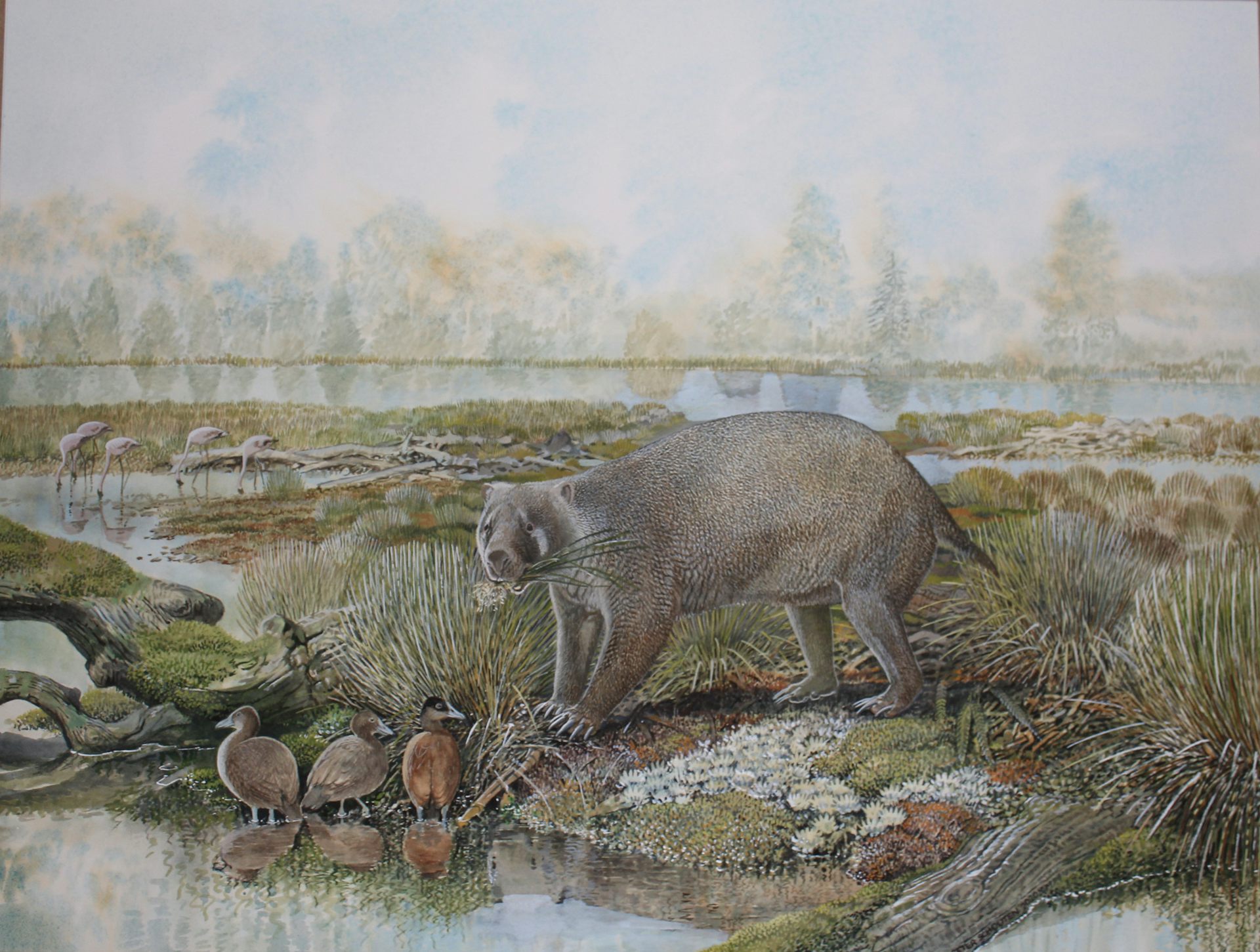
Close relative of Mukupirna fortidentata named Mukupirna nambensis.
Reconstruction of the Pinpa faunal assemblage by Peter Schouten,
CC BY-SA
CC BY-SA
The second species we described is a newly discovered early possum, named Chunia pledgei. It had teeth that would be a dentist’s nightmare, with lots of bladed points (cusps) positioned side by side, like lines on a barcode. This tooth shape is characteristic of species in the poorly known, extinct possum family called Ektopodontidae.
The new species is unusual in that it has pyramid-shaped cusps on its front molars. These might have been useful for puncture-crushing hard foods — a bit like a nutcracker.
So, what did ektopodontids eat? We don’t really know for sure – there’s no animal like them alive today anywhere in the world. Based on aspects of their molar morphology, we infer they were probably eating fruits and seeds or nuts. But they may have been doing something totally different!
Unfortunately, ektopodontids are tantalisingly rare in the fossil record, known only from isolated teeth and several partial jaws. The fossils show they had a lemur-like short face, with particularly large, forward-facing eyes. But until we find more complete skeletal material, their ecology will likely remain mysterious.
What remains astonishing is just how little we know about the origins of Australia’s living animals, owing in no small part to a 30-million-year gap in the fossil record – half the time between now and the extinction of the dinosaurs.
At the same time, it’s inspiring to think about the countless strange and fascinating animals that must have once lived on this continent. Fossil evidence of these creatures may still be sitting somewhere in the outback, waiting to be discovered.
This article is republished from The Conversation under a Creative Commons license. Read the original article.
- Assuming for the sake of argument that their usual 'get-out-of-jail-free' claim that all the dating methods are wrong/false/lies (take your pick), where are the non-Australian fossils that should be jumbled with these fossils if they were buried by a global flood?
- If these Australian megafauna mammals were on the Ark, why is there no mention of them, how did they all get back to Australian but no other mammals other than bats, humans and dingoes managed to, and how did they diversify so quickly, then become extinct?
- Why is the flood myth, with its dependence on magic and supernatural entities, lack of predictable evidence, unanswered questions such as the above and unsupported claims of massive scientific conspiracies, a better explanation than the scientific one of evolution on an old Earth over hundreds of millions of years?
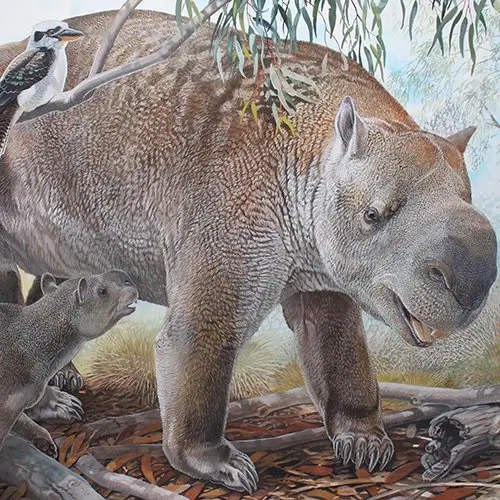
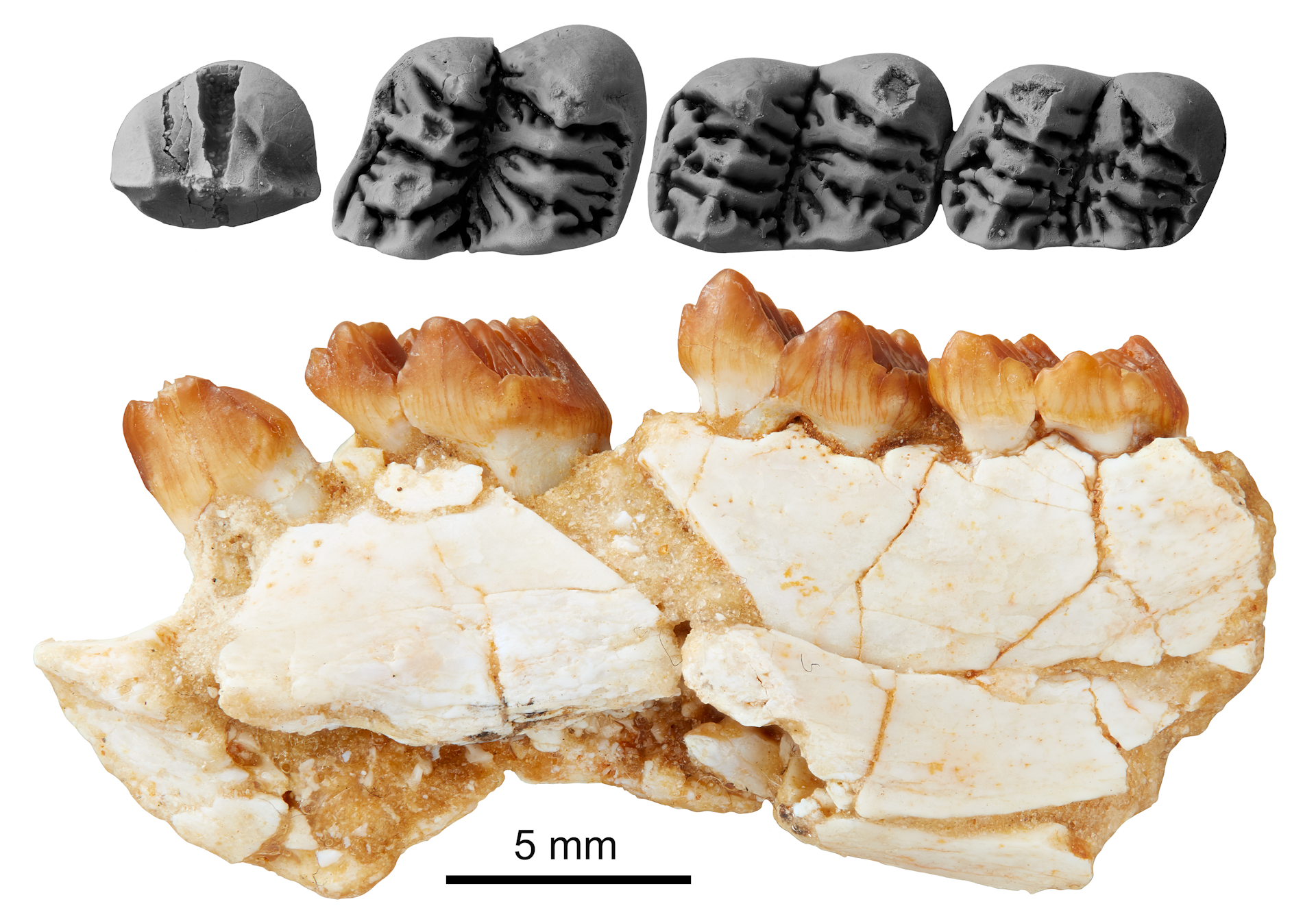


No comments:
Post a Comment
Obscene, threatening or obnoxious messages, preaching, abuse and spam will be removed, as will anything by known Internet trolls and stalkers, by known sock-puppet accounts and anything not connected with the post,
A claim made without evidence can be dismissed without evidence. Remember: your opinion is not an established fact unless corroborated.